It looks like you're using an Ad Blocker.
Please white-list or disable AboveTopSecret.com in your ad-blocking tool.
Thank you.
Some features of ATS will be disabled while you continue to use an ad-blocker.
The Peculiar Death Of Bobby..
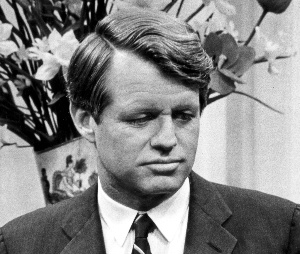
(Note: Sorry about the images. Centering them is impossible due to the current media issues on ATS right now.)
Robert Francis Kennedy, pictured above, is the third youngest male member of his generation of Kennedy's (Which included Joseph P. Kennedy Jr., John F. Kennedy and younger brother Edward Moore Kennedy) and is remembered today as being the somewhat controversial, young Presidential hopeful of the late sixties, as well as being the popular New York Senator at the time. He's also commonly known and referred to as the murdered younger brother of the Late President of the early 60's, John F. Kennedy. Robert, also known as Bobby, meeting his own demise on the 5th of July, 1968 a mere 5 years after his elder brother and by the same fate as him also - Assassination.
Quite naturally like his elder brother though, and due to the sheer nature of how they both met their demise, a vast array of conspiracies have come about and taken life. Also like the younger Kennedy's elder brother, many people seemingly are convinced that not just a conspiracy is plausible and a potential possibility.. but one undoubtedly exists in one form or another.
Even so, the nature of the two conspiracies are vastly different. To quote this website here in fact, one looking at the RFK case and in particular the potential shooter: "While the JFK assassination has reached the point where the answer is "Oswald might have done it or he might not have, there is no possible way that Sirhan could have inflicted the wounds on Senator Kennedy. All that is required is the official investigation."
"Sirhan" in the above snippet being a reference to the claimed Assassin of Bobby, Sirhan Bishara Sirhan (pictured below).
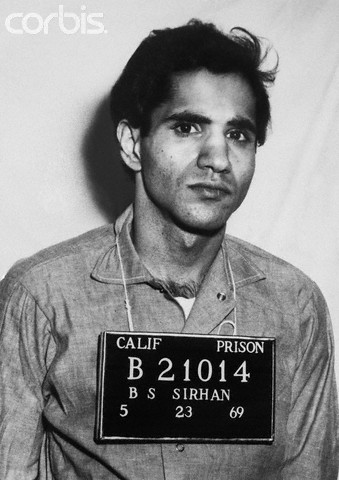
Perhaps unlike any other conspiracy theory discussed on ATS, this one seems almost certain to exist in some form or another - actually, It's almost surprising that a conspiracy being present in some form in this case isn't seen as a bonafide fact - but in writing this thread, I want to at least highlight these, what I believe to be facts, once more still. It certainly is a fascinating conspiracy to ponder over after all - Especially with the potential use of MK ULTRA, a topic which in itself deserves much more attention than it see's on ATS.
I'll be attempting to go into that side of the RFK case much more later on in this thread.. For now, please do allow me to quickly explain a little bit about this case, and how it all came to be in the first place.
After the unfortunate assassination of President John F. Kennedy on November 22nd, 1963, Robert Kennedy, being the Attorney General at the time, ended up continuing work under the orders of the new President, the man he was well known to have something of a rift with at the time, Lyndon B. Johnson. He continued working under Johnson before resigning further down the line in order to run his own campaign for the New York Senate in fact, just like he ran the campaign of John Kennedy to help him get elected to the Presidency years before.
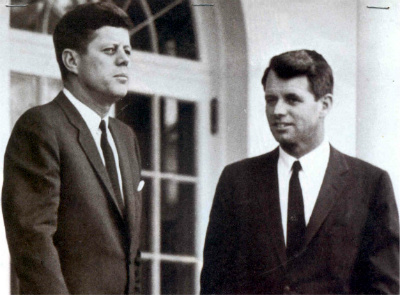
Kennedy obviously won, making topics such as Vietnam the main focus on his campaigns - particularly on how he wanted to get the troops out and back home. He was quoted as saying: “We’re going in there and we’re killing South Vietnamese, we’re killing children, we’re killing women, we’re killing innocent people because we don’t want a war fought on American soil, or because (the Viet Cong are) 12,000 miles away and they might get 11,000 miles away. Do we have the right, here in the United States, to say we’re going to kill tens of thousands, make millions of people, as we have, millions of people refugees, killing women and children, as we have.”
In March of 1968 Robert Kennedy, the now successful New York Senator, finally announced his late candidacy for the Presidency of the Unites States in what was a relatively shock move - shock as It was a terrible move politically, especially as Lyndon Johnson was still President at the time and It had the potential to look like a personal move. But Bobby went after it anyway. According to Richard D. Mahoney: “If there was one reason why Bobby was running, it was to end America’s war in Vietnam…. Politically, however, this looked self-destructive. A substantial majority of Americans supported the president’s policy. The antiwar movement, though a significant new factor in American politics, was not yet a defining factor.”
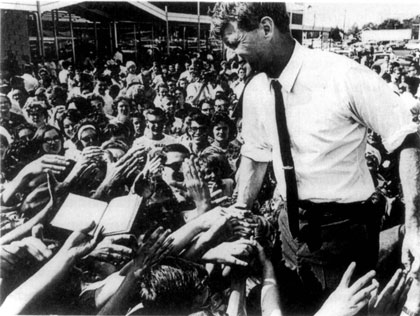
This decision by Robert Kennedy to go after the presidency caused Jackie Kennedy great concern. A few days after Kennedy announced his candidacy, Jackie famously said to Arthur Schlesinger, the very same man who helped Jackie Kennedy tape her famous "Jackie O Tapes" that have only been released a few weeks ago now: “Do you know what I think will happen to Bobby?” When Schlesinger replied that he didn’t, she said: “The same thing that happened to Jack.”
Throughout his campaign there was even more concerns surrounding the safety of Bobby Kennedy during his push for the Presidency. It all seemed like mere paranoid at the time but little did everyone know there were genuine truths to these concerns. The FBI for example picked up several reports of a plot to murder the young Kennedy from Jimmy Hoffa in a "contract killing", Hoffa being the well known and public enemy of Kennedy, especially after Bobby put him in jail, and who on several occasions displayed his displeasure at him and the Kennedy family as a whole. Even showing little remorse for the past murdered president on occasions.
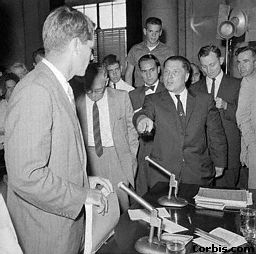
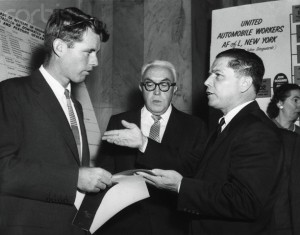
(Jimmy Hoffa seemingly arguing with Kennedy)
An interesting video showing a snippet of the televised trial of Hoffa at the hands of Bobby can be seen here:
*Slight Language Warning
One of the interesting stories that appeared in "American Journey" claimed that Jimmy Breslin asked several reporters around a table whether they thought Kennedy had “the stuff to go all the way”. One of the men at the meeting, John J. Lindsay was quoted as saying: “Yes, of course, he has the stuff to go all the way, but he’s not going to go all the way. The reason is that somebody is going to shoot him. I know it and you know it, just as sure as we’re sitting here. He’s out there waiting for him.”
Others have claimed that Bobby was going after the presidency merely to open the files on the death of his brother also. William W. Turner was once quoted as saying: “Throughout the primary (in California), Bobby Kennedy was asked by audiences whether he would reopen the investigation of his brother’s death if elected. He hedged, saying he would not reopen the Warren Report, but remained silent on the question of whether he would take action on his own. RFK was a pragmatist, if anything, knowing that he had to control the Justice Department to launch a new probe.” If there was a plot to Murder JFK and if they were still out there, Bobby's reluctantly to answer that question would undoubtedly unsettle them.
The Conspiracy To Assassinate
Bobby Kennedy in 1968 was still making a serious push for the presidency. He had literally just secured the democratic primary in California after the polls had closed very late on June the 4th, and he then set about addressing his supporters who were waiting for him in the Ambassador Hotel's Embassy ballroom in the Mid-Wilshire district of Los Angeles.
Just after midnight now on the 5th of June, and just after the victory speech, Bobby set about making his exit from the ballroom packed with his supporters. Now, as far as I can understand it, It's still not quite clear how the plans changed exactly or how Bobby came to make his way through the kitchen and pantry area behind the ballroom of all things as opposed to the planned route but whoever was to decide this certainly sealed his fate forever and sending him through this area at the last moment where his eventual killer was waiting seems almost too coincidental really..
It was through this area that Bobby was being directed by a security guard of the building called Thane Eugene Cesar though, a Cuban-American and suspected right wing racist who was only working part time and had acquired the job a few weeks before I believe, but whether he was the one who directed him through there or the order came from someone else and Cesar was just directing him is unclear. But there is one thing I'm personally sure of about Thane Eugene Cesar - he is one incredibly important in the RFK case - and I'd go as far as calling him a potential shooter. I'll explain more about this in a moment, for now here's one of the only pictures of him that I'm able to find:
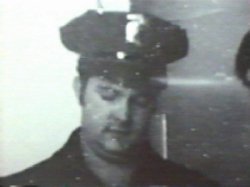
He was said to be physically holding RFK close to him as he walked him through the narrow Kitchen hallway filled with supporters, Bobby all the while shaking the hundreds of out reaching hands before him. One of those outreached hands was of a young 17 year old boy called Juan Romero, someone who would become famous for Boris Yaro's famous photograph of Bobby just after the assassination which can be seen below. But It was at this time that Bobby was shaking his hand where a young 24 year old Jordanian born Kitchen staff worker called Sirhan Bishara Sirhan stepped forward with his .22 caliber Iver-Johnson Cadet revolver and shot Senator Kennedy 3 times, also striking and injuring 5 other individuals in the process. This according to the official story..
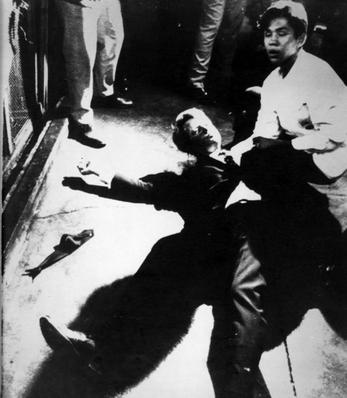
The famous speech and the emotional reaction of the crowd in the aftermath of the assassination can be seen/heard here:
Bobbys Last Speech And Assassination, Part 1
___________________________________
Bobbys Last Speech And Assassination, Part 2
___________________________________
Bobbys Last Speech And Assassination, Part 3
___________________________________
Bobby didn't die straight away however; he was even conscious and talking despite being shot in the head. It's widely claimed that his first words after the shooting were even, "Is everyone alright?" Sirhan Sirhan was immediately apprehended after the shooting and taken into police custody. Kennedy on the other hand, still hanging onto life, was immediately taken to a nearby hospital. It was only here that they discovered the other 2 bullet holes (one in his right armpit and another a few inches below).
He was taken for surgery which lasted three hours and forty minutes. During this operation, surgeons removed a blood clot that had formed on his brain and the doctors removed as many "fragments of metal and bone as they could.” By 5 PM, his condition was extremely critical. He managed to hold on for an entire day after his assassination though, but It was at approximately 1:44 am on the 6th of June, with his pregnant wife, his 10 children and the rest of his family nearby, he unfortunately and finally died.
It was here that the second gunman conspiracy theory was born. It's also here that Thane Eugene Cesar also becomes one of the prime suspects as amazingly he could be observed with a gun in his hand immediately following the assassination - let's not forget that the assassin was seemingly behind Kennedy and was incredibly close to him - well this fit's in with Thane's perfectly as he was said to have even crouched down at the time of the assassination potentially providing the upward shooting position that could be observed.
He doesn't help his case when he continues to lie about key details also. Such as when he claimed to have sold his gun before the assassination to a man called Jim Yoder for example. When Jim as eventually tracked down however, the receipt was still in his possession and the date stamped on it was for the 6th of September 1968 which if true means Cesar was lying and actually sold his gun a few months after the assassination of Bobby.
He also admitted that he did indeed have a gun out during the assassination, but he didn't manage to fire it at Sirhan. But there's at least one witness who claimed that he did indeed manage to fire it still.
Here's an interesting snippet about the man Thane Eugene Cesar:
(Source)
Cesar had been employed by Ace Guard Service to protect Robert Kennedy at the Ambassador Hotel. This was not his full-time job. During the day he worked at the Lockheed Aircraft plant in Burbank. According to Lisa Pease, Cesar had formerly worked at the Hughes Aircraft Corporation. Lockheed and Hughes were two key companies in the Military-Industrial-Congressional Intelligence Complex.
Thane Eugene Cesar was a Cuban American who had registered to vote for George Wallace’s American Independent Party. Jim Yoder claimed that Cesar appeared to have no specific job at Lockheed and had “floating” assignments and often worked in off-limits areas which only special personnel had access to. According to Yoder, these areas were under the control of the CIA.
Yoder also gave Turner and Christian details about the selling of the gun. Although he did not mention the assassination of Robert Kennedy he did say “something about going to the assistance of an officer and firing his gun.” He added that “there might be a little problem over that.”
Cesar was afraid that the assassination had been captured on film. It was. Scott Enyart, a high-school student, was taking photographs of Robert Kennedy as he was walking from the ballroom of the Ambassador Hotel to the Colonial Room where the press conference was due to take place. Enyart was standing slightly behind Kennedy when the shooting began and snapped as fast as he could. As Enyart was leaving the pantry, two LAPD officers accosted him at gunpoint and seized his film. Later, he was told by Detective Dudley Varney that the photographs were needed as evidence in the Sirhan trial. The photographs were not presented as evidence but the court ordered that all evidential materials had to be sealed for twenty years.
In 1988 Scott Enyart requested that his photographs should be returned. At first the State Archives claimed they could not find them and that they must have been destroyed by mistake. Enyart filed a lawsuit which finally came to trial in 1996. During the trial the Los Angeles city attorney announced that the photos had been found in its Sacramento office and would be brought to the courthouse by the courier retained by the State Archives. The following day it was announced that the courier’s briefcase, that contained the photographs, had been stolen from the car he rented at the airport. The photographs have never been recovered and the jury subsequently awarded Scott Enyart $450,000 in damages.
The second key anomaly I'd like to bring up for discussion is the .22 caliber Iver-Johnson Cadet revolver that Sirhan undoubtedly had in his possession and undoubtedly fired - But, what I'd like to bring up is the fact that It's confirmed to only hold a maximum or 8 bullets...
Please see this fascinating video where Audio Expert Phil Van Praag, who led the team, goes into detail on how this was discovered exactly:
The Acoustic Evidence
___________________________________
The bullet holes in the ceiling and the surrounding area, the shots sustained by Kennedy and the injuries to 5 other witnesses (Elizabeth Evans, a friend of Pierre Salinger, one of Kennedy's campaign aides a nearby teenager, Irwin Stroll and a Kennedy volunteer) are all completely inconsistent with the official story going on the bullet's in Sirhans possession alone. Here's a fascinating snippet from the MFF explaining a little bit about this and It's significance:
(Source)
Sirhan's Iverson .22 revolver held a maximum of 8 bullets. Two bullets were removed from RFK, and five from other victims. One of the three bullets to strike RFK grazed him and was determined by LAPD to have gone into the ceiling, though it was never recovered. That accounts for all 8, even conceding the LAPD's reconstruction which explained away bullet holes found in ceiling tiles, by positing that one of the bullets had ricocheted back down and struck victims (causing two ceiling holes in the process).
What is not accounted for are bullet holes in the doorframe where RFK's party had entered the pantry. Photographs taken by the FBI, LAPD, and AP show apparent bullet holes which have been circled and initialled. Some pictures show police officers pointing at them; one AP photo is labelled "Bullet found near Kennedy shooting scene." Two police officers depicted in the photos told author Vincent Bugliosi that they had observed an actual bullet embedded in the wood of the centre door frame. Hotel waiter Martin Patrusky said that police officers told him that they had dug two bullets out of the centre divider. FBI agent William Bailey, in the pantry within hours of the shooting, said he could see the base of the bullet in the centre divider. Other confirmation comes from photographers and even the carpenter who assisted in removal of the door frame for police evidence.
It seems that a second gunman is undoubtedly true - And IMO It's certainly possible to be Cesar. Various photographs of the Bullet holes can also be cited here:
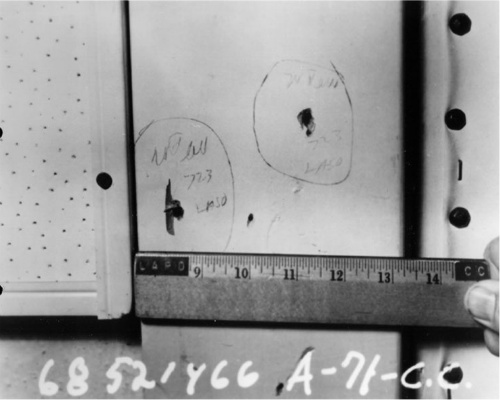
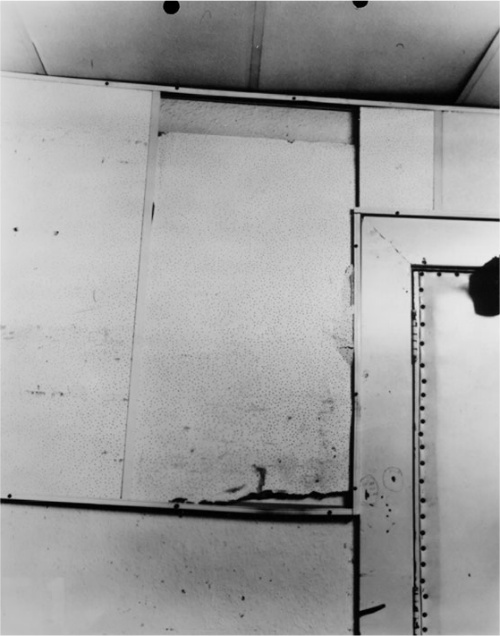
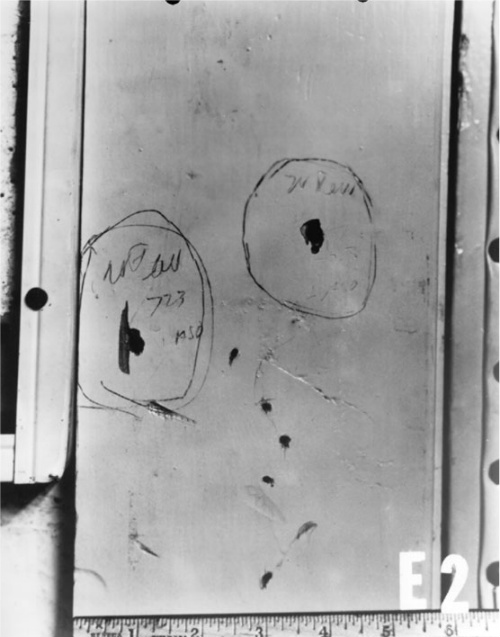
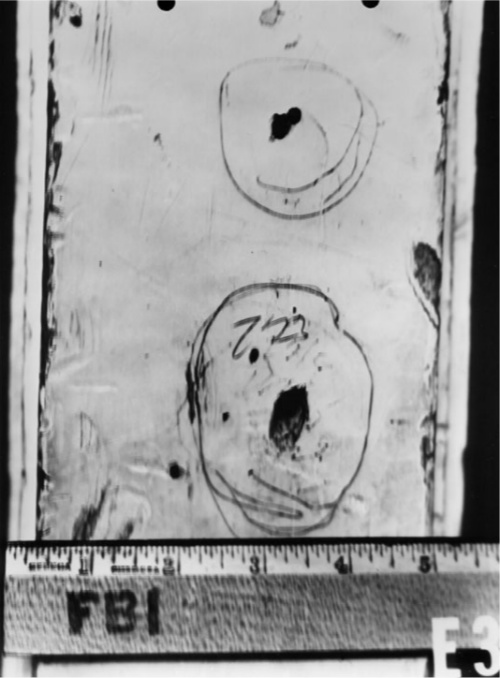
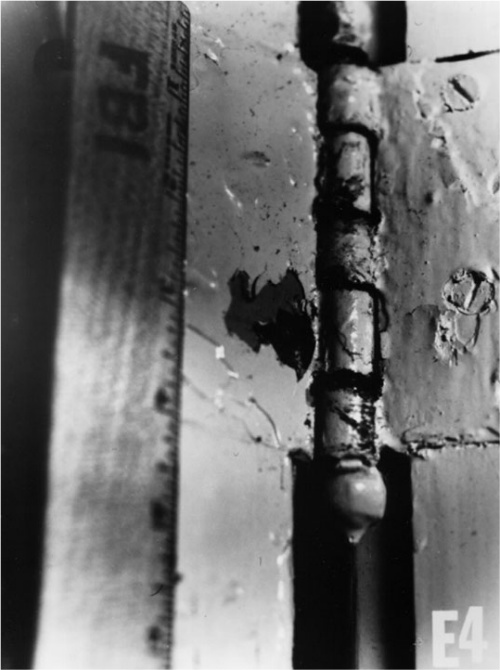
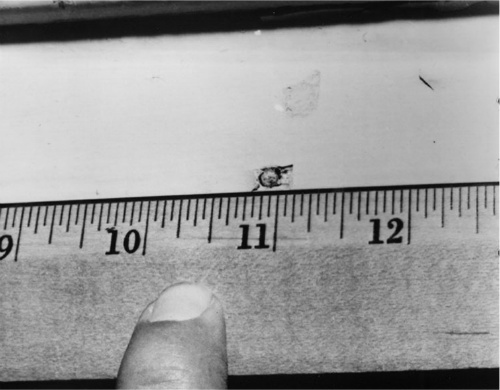
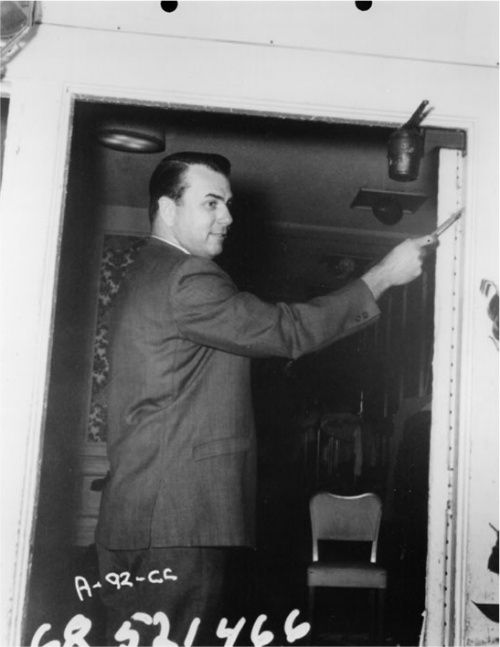
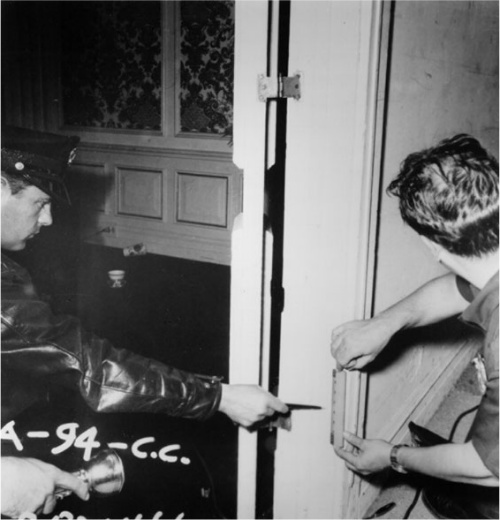
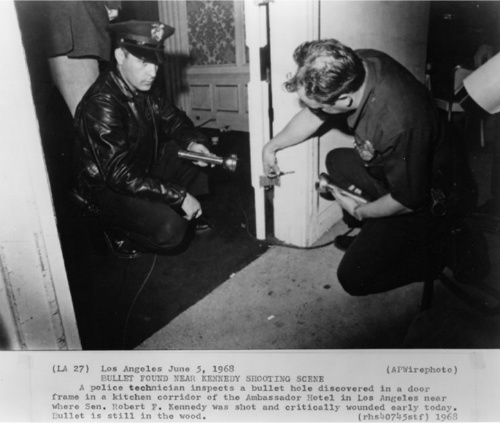
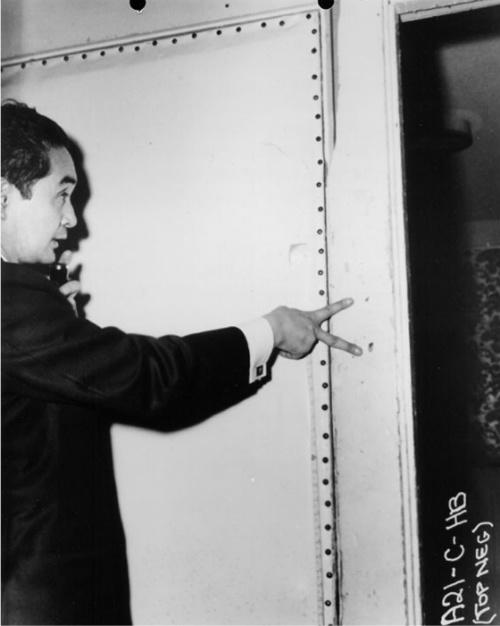
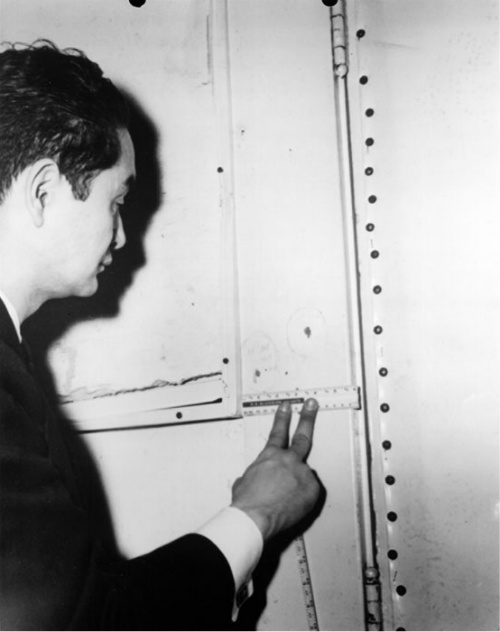
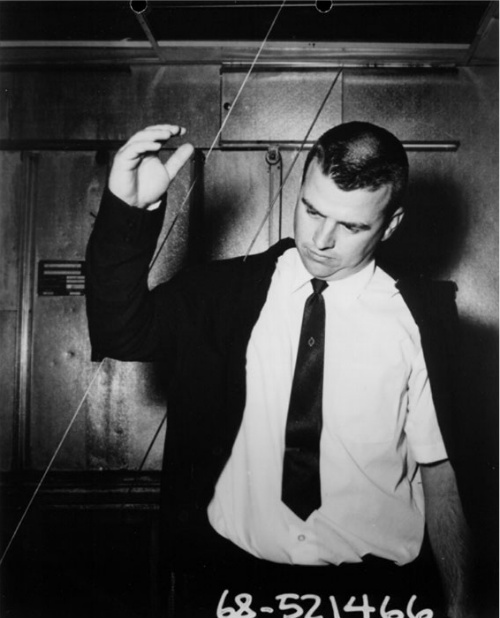
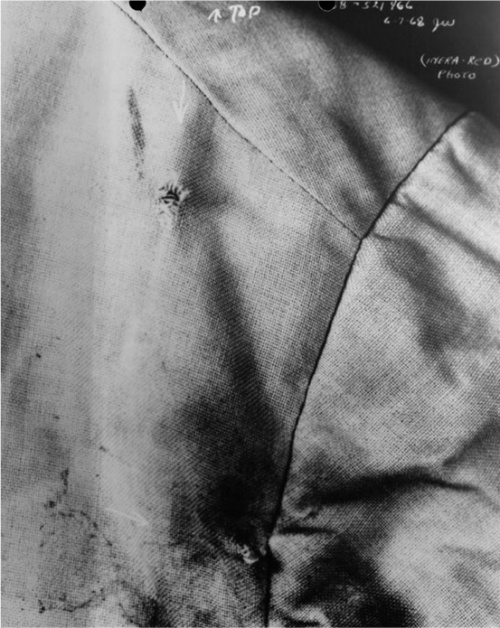
Source of all the photographs
Anyway, I had mentioned previously that Sirhan Sirhan shortly after the assassination was apprehended by police, well, after this they then went about visiting his home and It was here that Sirhan's famous Diary entries were found - entries that included phrases such as " RFK must die" and "Robert F. Kennedy must be assassinated" over and over again. Pages and pages and pages went on with these bizarre entries. An entry from May the 18th said "My determination to eliminate RFK is becoming more the [sic] more of an unshakable obsession." "Robert F. Kennedy must be assassinated before 5 June 68." This, once again, giving some to believe he was under influence of someone and was being programmed in some way.
(Source)
Dr. Herbert Spiegel, a New York psychiatrist who teaches at Columbia University and who is widely regarded as among this country's leading experts on hypnosis, has concluded that Sirhan was probably acting out hypnotic commands when he fired a gun in Senator Kennedy's presence that fateful day. Sirhan himself was so disoriented following his arrest that he did not even know he had yet to be arraigned. During pre-trial psychiatric examinations in his cell, Sirhan proved to be the ideal hypnotic subject, climbing the bars without knowing that he was carrying out post-hypnotic commands. Expert trial testimony established that notebook passages containing repetitions of the phrase "RFK Must Die" were written in a hypnotic trance, and Sirhan spontaneously reproduced this phrase under hypnosis when asked in his cell for a description of the Senator. Sirhan's amnesia about the crime was unshaken by hypnosis and has consistently remained intact.
This exxasberated by the fact that when working as a stable boy Sirhan suffered quite a severe head injury that, according to official documents might I add, "changed him" from that moment on. Here's the first of documents of this nature:
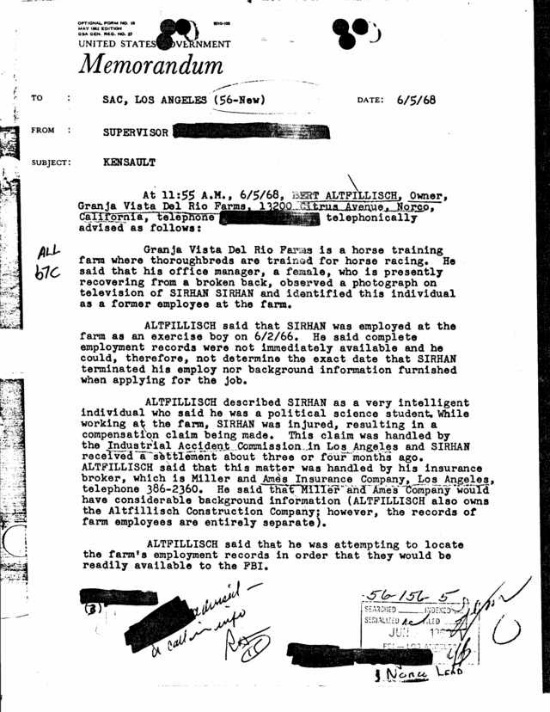
Here's the second of which:
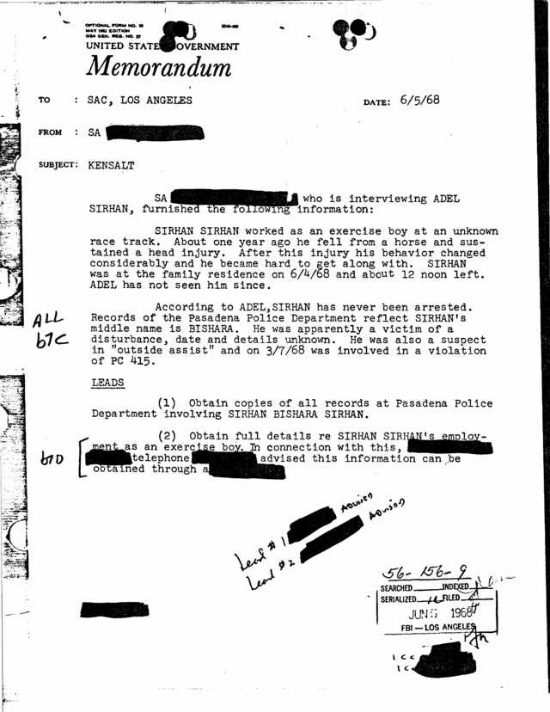
Some believe after this he was quite literally programmed and was turned into a Manchurian Candidate. It was due to this that people have repeatedly tried to look for who could have been controlling Sirhan, if anyone at all - It was here that the "Women in the Polka Dot Dress" was found - someone repeatedly seen with Sirhan prior to the assassination along with an accomplice.
These 2 individuals were allegedly seen by witnesses near Sirhan just prior to the assassination itself, some even suspect the accomplice, a tall male, to be the second shooter, perhaps even a third after Cesar. She was also seen on multiple occasions before the assassination was to take place also. Such as at the Robbie's Restaurant in Pomona where Kennedy held a campaign luncheon for 400 guests on May 20, at the RFK campaign office in Azusa on May 30, and at the Ambassador Hotel on June 2, the Sunday before the assassination. (Although Sirhan was also seen there on June 2, the witness who made the claim allegedly did not see the two people together.) On June the 1st, just days before the assassination, a man called Dean Pack was hiking with his son in the Santa Ana mountains when they claim to have actually come across a young man who resembled Sirhan actually shooting a pistol at a target in the company of a girl and another man - possibly the 2 in question.
Just after the assassination, witnesses present claim that the couple literally fled the scene, the woman even allegedly shouting "We shot him! We shot him!!" at one point. Something I personally find hard to believe admittedly as I can't help but wonder why she would implicate herself in the plot like this. It makes no sense so I have to ask - perhaps someone misinterpreted what she said? The claim is she said "We shot him", but perhaps what she really said was "They shot him?" This was a rather chaotic incident after all and It's an easy mistake to make given the circumstances.
Well, even so, other witnesses to RFK campaign worker Sandy Serrano, the one who originally heard it, have come forward claiming that the women in the Polka dot dress and her accomplice did indeed say "We shot him!" Officer Paul Sharaga corroborated a story from another old couple in a different location who confirmed the story also. A newspaper article titled: "Young Pair Shouted, "We Killed Kennedy" can be seen here: (Source)
It must be said that Sirhan wasn't even the only person Police were looking for in the minutes after the assassination, another search was conducted for this couple I believe but It was swiftly stopped and all attention was given to Sirhan and Sirhan alone.
Many witnesses on the scene also saw this women in particular, some even hearing her speak. Here's a nice snippet on her description:
The girl herself remains a mystery. Invariably described as 'beautiful,' 'attractive' or 'good looking' with 'a good figure,' those who saw her were able to give fairly detailed descriptions afterwards. The matter of her ethnicity is easily resolved. She was Caucasian. Between them, Klaber and Melanson and Pease cite five witnesses who chose the word 'Caucasian' to describe her, while the same descriptor is found in the LAPD description that derived from the Bernsteins. Another witness, Darnell Johnson, described her as white. Of the witnesses who
provided a description of the girl seen wearing a polka dot dress at the Ambassador Hotel on the night of June 4-5, therefore, the only ethnic descriptor used was Caucasian. Those who did not use the word Caucasian either said she was white or said nothing about her ethnicity at all. It is true that the descriptor ‘Caucasian’ is sometimes used in police reports for persons of Mediterranean, Hispanic or Arab appearance. Yet ‘Caucasian’ is used by several witnesses in direct speech, not in LAPD reports. Furthermore, not one of the witnesses who heard her speak that night makes mention of a foreign accent. It is therefore extremely unlikely that she was
anything other than a white American.
(Source)
One witness present at the time of the assassination, Roy Mills, added the information that the polka dot girl was wearing a press pass, which explains how she managed to penetrate the Kennedy event, while Karen Ross, who believes she saw the same girl at the Ambassador Hotel the previous Sunday, June 2, recalled that she had a 'round face.' According to one witness, she had olive skin
People have searched for the name of this woman over the years after such strong descriptions and as far as I'm able to find the leading theory for whom the Women in the Polka Dot dress might be is a right wing racist and someone heavily connected to organisations such as the KKK for example - A women called Kathy Ainsworth as pictured below:
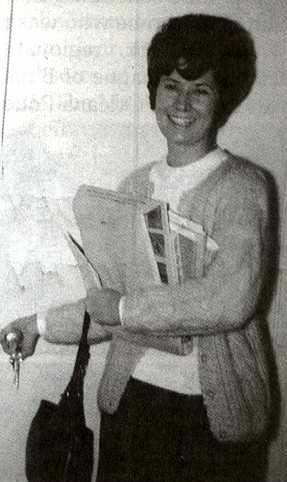
I was even a little bit surprised and disappointed that upon an ATS search on this name, not a single result was produced. At the very least I hope to be bringing a completely brand new theory forward for discussion on ATS though.
What's particularly a bit more interesting about this theory is who Ainsworth was romantically involved with at the time - It was a man called Thomas A. Tarrants, someone who also had strong right wing views and who also fit the description of the accomplice she was seen with on multiple occasions prior to the assassination of Bobby. An image of him from 1967, a year before the death of Bobby, can be found below:
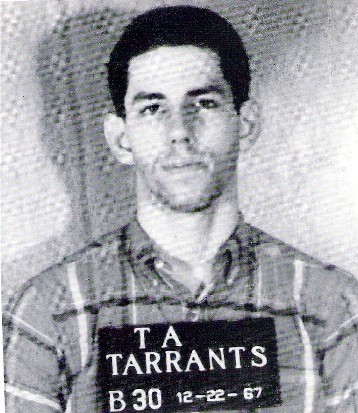
Amazingly, and perhaps somewhat too coincidentally, both of these individuals, both well, known for being "Ku Klux Klan bombers" of the late sixties, both was involved in an FBI shoot out, The FBI being ran by J. Edgar Hoover, someone who hated Bobby Kennedy might I add, a mere 3 weeks after the assassination of Bobby, Kathy herself being killed in the incident - one which was seen as very "suspicious" indeed. Tarrants survived the attack after unbelievably being shot 19 times.
You see Tarrants in particular is most well known today as being the Ku Klux Klan bomber, one who bombed several synagogues and homes of civil rights activists in Mississippi in the 60's. He and Kathy in September of 1967 in particular were responsible for the bombing of Temple Beth Israel in Jackson, Mississippi. Kathy on the other hand is most well known today, despite being a relative unknown at the same time still, to be heavily involved in racist groups also, and particularly the bombing I mentioned above.
She was a member of the Americans for the Preservation of the White Race in Jackson, Mississippi, often speaking at rallies. She also had membership in three different Klan organizations. In addition to the White Knights of Mississippi, she held membership in the United Klans of America (Alabama) and the Original Knights of the Ku Klux Klan (Louisiana). So, it seems that, if these two individuals are indeed involved in the assassination of Robert Kennedy, Civil rights could undoubtedly have played a part - and It's very well known that along with hugely supporting the end of Vietnam Kennedy was a huge advocate for Civil Rights. It could perhaps be a coincidence but IMO It's unlikely to be.
Anyway, like I had mentioned, the young couple were involved in an incident which saw the death of Kathy a mere 3 weeks after the assassination of Bobby, something which has caused some researchers to suspect a clean up operation, perhaps something similar to what we saw in the JFK assassination case for example.
What actually happened was an ambush really, or a "FBI-ADL death trap" as It's known as today. Please see this interesting snippet:
In Mississippi local Jews were the victims of a series of recent Klan bombings. In response the B'nai B'rith and the Anti-Defamation League began to raise several thousand dollars to pay informants willing to betray the bombers. Meridian police chief C. L (Roy) Gunn, who himself was on the Klan hit list, asked if the ADL would object to using the money "to purchase bodies and not testimony." One of Gunn’s sergeants Lester D. Joyner formed a blackshirted commando squad called "Joyner's Guerillas" and had been waging their own private war against the Klan by firing into Klansmen’s homes at night and detonating explosives on their lawns. Adolph I. Botnick regional director of the ADL in New Orleans helped in raising the money among the Jewish community and worked with the FBI and Meridian police in setting up the death trap. Botnick who worked with four others in the original planning said in an interview with the Los Angeles Times, "We were dealing with animals and I would do it again."
(Source)
The FBI found two Klansmen, brothers Alton Roberts and Raymond Roberts, who were willing to cooperate. Alton Roberts was out on appeal from the conviction of murdering the three famed civil rights activists in Philadelphia, Mississippi in 1964. On June 19 the Roberts brothers approached Danny Joe Hawkins - who helped Tarrants in the bombing of the Meridian synagogue on May 26 - and convinced him the next target should be ADL head Meyer Davidson. Davidson led a drive to raise $75,000 for information on the bombing of the synagogue. Hawkins decided not to participate suspecting he was under surveillance. Kathy Ainsworth at the last minute agreed to help Tarrants with the next bombing.
On June 30, 1968, Kathy Ainsworth and Thomas Tarrants drove to the home of Meyer Davidson planning to place the bomb on his front porch. The FBI had moved the Davidson family out of their home earlier and occupied the house across the street as a command post with 8 to 10 agents. That night 12 members of "Joyner's Guerillas" wearing black polo shirts were hiding in the bushes across from the Davidson home. Reporter Jack Nelson was later told by police their objective was to kill Klan bomber Thomas Tarrants, "We had in mind killing him, I don't mind telling you."
Ainsworth remained in the car as Tarrants approached the ranch-style yellow brick home on 29th Avenue. He carried a box containing 28 sticks of dynamite wired to a clock set for 2 a.m. The police opened fire with a hail of gunfire reminiscent of a scene from the 1967 film, Bonnie and Clyde. Ainsworth died, shot through the neck as she leaned over to open the door for Tarrants. Tarrants was hit 19 times but survived.
At the time of her death Kathy Ainsworth was a fifth grade teacher at a segregated Citizens' Council elementary school in Jackson, Mississippi. She was three months pregnant and did not apply to renew her contract at the school. Kathy Ainsworth is buried in Magee, Mississippi.
I find it particularly odd that they openly stated that the objective was to "kill Tarrants", and then Ainsworth who was in the car at the time, was also suddenly fired upon and killed. Whether It was some sort of "Clean up operation", who knows but It reads like one to me on occasions.
Ainsworth and Tarrants have also been linked to the Luther King murder at times.
(Source)
Kathy Ainsworth has been mentioned in conspiracy theories involving the assassinations of Robert F. Kennedy and Martin Luther King, Jr. Some have speculated Kathy Ainsworth was the girl in the polka dot dress who Sirhan Sirhan saw before he shot the senator. In the King assassination, the mother of Kathy Ainsworth said her daughter and Tarrants were in Memphis, Tennessee April 4, 1968 the day King was shot and played a role in jamming police communications.
Here's an interesting website that goes into a bit more detail on the Meridian Shooting, It's certainly worth a read: Source
Now I'm still looking for as much information as I can about Kathy Ainsworth and Thomas A. Tarrants, particularly how they could've been the Women in the Polka Dot Dress and her accomplice. There's no doubt that the two individuals in question do fit the description of both individuals seen with Sirhan perfectly and they certainly had a troubled past which would provide an absolute perfect motive for remaining in a plot to murder Bobby Kennedy of all people.. but It's still not enough.
I really can't seem to find anything concrete linking them to it or linking them to being recruited for such a thing at all. But I'd certainly hope that the fine members of ATS would help in finding some more information on this issue.. We very well could have some truth to this theory, one that if true finally answers the questions asking who the Polka Dot Dress women and her accomplice were.
Now, as I come to the end of this thread, I'm still finding myself without a lot of answers to a great deal of questions. I mean first off, there's really no doubt that Sirhan Sirhan was not solely responsible for the murder of Bobby Kennedy. He himself in April of this year (2011) under hypnosis has claimed according to this article:
(Source)
Sirhan now claims he thought he was at a firing range – and saw circles with targets before his eyes. His lawyers say he never planned to kill Kennedy; another gunman did that, with Sirhan as a diversion. The parole board denied Sirhan – again – last month.
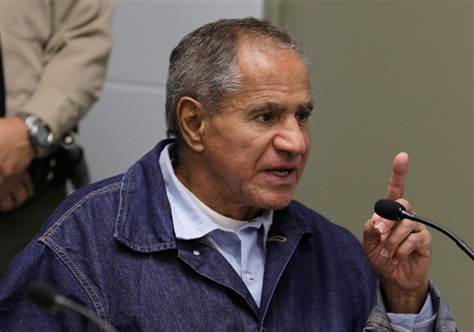
At the time of the assassination he had a gun out, he was holding onto Bobby, was stood directly behind him and he was crouched down towards the floor - Bobby's wounds came from behind him, they came close enough to cause burn marks around the wound and the trajectory of them says they came from a position that was be,low and pointing upwards - something confirmed by doctors. Not forgetting that Sirhan could only carry 8 bullets and 13 are now confirmed to have been fired. Cesar was also said to have been very right wing - this being a potential motive, especially when looking at Ainsworth and Tarrants.
Key Evidence has been proven to have been destroyed over the years also. Such as the ceiling tiles potentially possessing extra bullets which were destroyed due to being "too large to fit into a card file." - and countless photographs also. And there's many more incidents like this.
Whoever killed Bobby Kennedy, and It certainly doesn't seem as though Sirhan was that man, he especially doesn't seem to have fired the fatal head shot anyway, It seems as though the man responsible was never caught, It seems as though his name though was Thane Eugene Cesar and the others involved were Thomas A. Terrants and Kathy Ainsworth..
Sirhan Bishara Sirhan, the potentially innocent man and only man arrested for the murder of Bobby Kennedy as seen upon his arrest below:
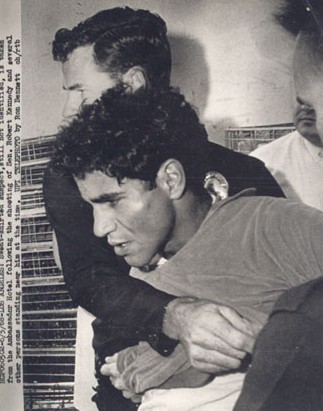
A new parole hearing for Sirhan is now scheduled every 5 years but it doesn't seem to matter anymore. His parole is repeatedly denied on the basis that Sirhan still does not understand the full ramifications of his crime. Sad really. A potentially innocent man, someone perhaps even programmed, is in jail today. And on that note I shall conclude this thread and say thanks to all those who actually took the time to read everything here. I'd love to hear your thoughts also.
In regards to the assassination I'll end this thread with a small and simple quote from Bobby Kennedy, I’m led to believe, shortly after the death of his elder Brother and President, John:
“ I thought they'd get one of us, but Jack, after all he's been through, never worried about it. I thought it would be me.”
still am confused about the real perpretator(
imo this guy was a definite candidate for the mk ultra trials at the time, there is to much *evidence* that supports it. seems the closer to the truth you get you become a liability
I can't wait to read this!! I love your Kennedy threads
As you know it will now be linked in various places!
S&F!
imo this guy was a definite candidate for the mk ultra trials at the time, there is to much *evidence* that supports it.
I agree. I think there's a great deal of "reasoning to believe" he was involved with such things at the time - or was recruited for such things at least.
First off I can prove he did indeed suffer a head injury and "changed" almost suddenly afterwards (see my post for the 2 official documents I cited) we know that he was heavily interested in topics like Mind control and hypnosis, his urge to commit the crime on Kennedy was becoming strangely more powerful, he can't remember writing about murdering Kennedy (at which point he himself cites the urge becoming more powerful which suggests to me the urge was only when he was "under"), to this day he maintains he can't remember murdering him at all and we have experts in the field of hypnosis who believe him to have been under the influence at the time and when writing in his diary.
Not forgetting the MK ULTRA programs we know for a fact were occurring at the time also. Sirhan Sirhan, in my personal opinion, is a classic Manchurian Candidate.. and anyone who actually knows me knows how skeptical I am of such things working let alone being used in these types of situations also.
Also as i sit and ponder (as i do) i wonder why *they* felt they may have needed a second shooter? especially if this guy was already under the control,( imo it seems he obviously had handlers - the word repitions and blank memory are a classic sign of *mind control* techniques used, even today psychiatrists use them esp when hypnotising people to stop smoking etc. interestingly not everyone is a good candidate for this form though) - as (to me) the head shot from what is blatantly obviously from behind would have been enough to do the job. i concur that perhaps one of the following *may* have happened
1. the obvious one that Sirhan Bishara Sirhan (weird bloody name btw) was the patsy (the fall guy) and used to merly cover up the main shooter
2. Perhaps one less known theory....2 different groups operating without the others knowledge - i.e we have Sirhan Bishara Sirhan (and his *handlers* ) who went to all the trouble they did to do the hit that day, then we have group no.2 working on their own cause.
Either way the OS was a load of B.S and this case in particular should have gotton way more attention than it did at the time as alot of the so called evidence was either hushed up or swept away.
So, I'm wondering, this guy, Thomas A. Tarrants, survives being shot 19 time, which is incredible. Where is he now? Has he ever tried to speak out on the assassination? Has anyone tried to interview him about it?
So much info I did not know about.
Rising Against - this will be one that may take me a while to read today, but in going through the OP I'll quick just throw out a "thank you" for all of the well written info - checking back when I can respond appropriately.
CJ
Hiya Chiefs... interesting question so I did a google search and this is what I found out about him and his life after the shoot-out:
Tom Tarrants was born and raised in Mobile, Alabama. As a high school student in the mid-sixties he opposed the desegregation of the public schools and eventually joined the Ku Klux Klan.By the age of 21, he was a full-fledged racist and anti-Semite and was a terrorist in the White Knights of the Ku Klux Klan, at that time described by the FBI as the most violent right-wing terrorist organization in America. After a bloody shoot-out with the police and FBI, in which his partner was killed and he nearly died, Tom was arrested. He was eventually sentenced to thirty years in the Mississippi State Penitentiary, one of the worst in the nation at that time. A few months later, he escaped from prison, but was later apprehended by the FBI after another shoot-out in which one of his accomplices was killed.
While reading the Gospels in prison, Tom experienced a life-changing conversion to Jesus Christ. He subsequently renounced the Klan, with its racism and hatred, and devoted himself to serving Christ and promoting the love and peace that Christ alone can give. He was incarcerated for eight years.
After his release from prison, Tom attended the University of Mississippi, and later attended seminary, graduating with a Masters of Divinity degree. He is the author of The Conversion of a Klansman (Doubleday, 1978), and is co-author, with Dr. John Perkins, of He’s My Brother (Baker/Chosen, 1995). He has written articles for Christianity Today, Tabletalk and Kingdom Quarterly, and been the subject of documentaries by ABC, CNN and Dutch Television. He has served as Campus Minister at George Mason University, as Co-Director of the School for Urban Mission in Washington, D.C. and as Co-Pastor of Christ our Shepherd Church in Washington, D.C. He is now President of C. S. Lewis Institute and is also pursuing doctoral studies in Christian Spirituality at Fuller Theological Seminary. The focus of his ministry over the years has been in preaching, teaching, and discipling.
Tom has lived in the Washington, D.C. area since 1978
Source
This is of couse a very shortened version of his 'history'. But what I find so incredible here is that he was originally sentenced to 30 years in prison, then escaped, was caught again and then LET GO after serving only 8 years. Was this because he claimed to have had a life changing event in finding Christ? Why? Even today inmates who have his track record and make claims to having found Christ are usually not given their freedom after such a short time in jail. That to me is curious, does not seem rational and raises yet more questions.....
Was this because he claimed to have had a life changing event in finding Christ? Why?
I was reading something a short while ago that brought up a theory which said he was let out early after making a deal with the FBI, the ones who shot him and seemingly tried to kill him in the first place. Many suspect J. Edgar Hoover, the man at the head of the FBI to be involved in the case of Tarrants just like they suspect him to be involved in the case of the other Kennedy's also, particular John. So maybe Hoovers FBI and Tarrants struck a deal together that said they'll give Tarrants his freedom back and in return he'll keep quiet about his activities with them.. perhaps one that involved the death of RFK. Or something to that effect anyway..
I believe he's still alive today also but I'm not 100% sure where at this time. It might be Washington like your source highlights. I do believe the source I was reading before highlighted that he wrote a book and that he, to this day, still doesn't talk much about the FBI or his KKK connections at all.. it certainly wasn't mentioned in the book according to that source anyway.
I'll post it if I dig it up again, I don't believe I posted it in the opening posts.
EDIT: It was a different one to the one you posted also but that seems to have much of the information there still.
Yes, Tarrants is still alive. He is currently the Director of Ministry at the C.S. Lewis Institute and still resides in Washington, DC. He was the President of same organization until 2010 when he moved to his current postion within the organization. The link provided will show him currently on the CS Lewis Institute staff page:
CS Lewis Institute Staff Directory
I believe, like you, that he struck a deal with the FBI, and if not with them, with some other very high ranking department or official. My question as to why he was let go was kind of a tongue and cheek question as if after asking I would have done the old "wink, wink, nudge, nudge" routine.
It would be interesting to know if there was some other offering in there in addition to just "if you promise to be a good boy and keep quiet, we'll let you go", and I am refering to monetary compensation there seeing as how once he was let out of prison he then went to college which we all know is not a cheap thing even then. Just my 2 cents for what its worth.
Working on some other questions I have as well and will post those once I get my thoughts together..... as always an excellent thread!!
-
Happy Thanksgiving to ATS
General Chit Chat: 2 hours ago -
Simple Thanksgiving
Food and Cooking: 9 hours ago
-
V.P. Kamala Harris releases a video and nobody understands why
US Political Madness: 17 hours ago, 16 flags -
Mind Blowing Cave under someones land
Fragile Earth: 13 hours ago, 16 flags -
The Party of Peace - Trump Cabinet Picks Targeted with Death Threats
US Political Madness: 14 hours ago, 15 flags -
Trump could make a peaceful American Revolution
US Political Madness: 12 hours ago, 14 flags -
Simple Thanksgiving
Food and Cooking: 9 hours ago, 14 flags -
Trump Presidential Transition Team will not use GSA or Government entities to come to DC
US Political Madness: 13 hours ago, 13 flags -
Happy Thanksgiving to ATS
General Chit Chat: 2 hours ago, 5 flags
-
Trump Presidential Transition Team will not use GSA or Government entities to come to DC
US Political Madness • 13 • : angelchemuel -
Petition Calling for General Election at 564,016 and rising Fast
Political Issues • 106 • : angelchemuel -
Happy Thanksgiving to ATS
General Chit Chat • 3 • : IceHappy -
Simple Thanksgiving
Food and Cooking • 27 • : Owlwatcher -
Mind Blowing Cave under someones land
Fragile Earth • 17 • : Owlwatcher -
The Party of Peace - Trump Cabinet Picks Targeted with Death Threats
US Political Madness • 27 • : DBCowboy -
President-Elect DONALD TRUMP's 2nd-Term Administration Takes Shape.
Political Ideology • 256 • : WeMustCare -
-@TH3WH17ERABB17- -Q- ---TIME TO SHOW THE WORLD--- -Part- --44--
Dissecting Disinformation • 3389 • : Crazierfox -
I thought Trump was the existential threat?
World War Three • 113 • : WeMustCare -
Mood Music Part VI
Music • 3719 • : MRTrismegistus

